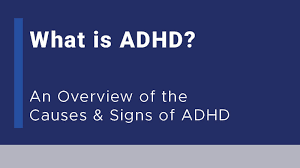ADHD is a condition that affects a significant number of individuals across the world, manifesting in various forms and intensities. It’s characterized by patterns of inattention, hyperactivity, and impulsivity that interfere with functioning or development. Understanding these signs and exploring a diagnosis can serve as the pathway to effective management strategies. Below, we provide a comprehensive overview of the essential information pertaining to ADHD. Keep reading to gain an insightful understanding that can help in identifying and addressing this condition.
Understanding ADHD: Definitions and Misconceptions
ADHD is often misunderstood, with many misconceptions surrounding its nature. It is a neurodevelopmental disorder that is usually diagnosed in childhood but can persist into adulthood. The causes of ADHD are thought to be multifaceted, involving genetic, environmental, and neurological factors.
One of the prevalent myths is that ADHD only affects children, and they invariably outgrow it. However, studies show that around two-thirds of individuals diagnosed with ADHD in childhood continue to experience symptoms into adulthood. It is also commonly mislabeled as a behavioral problem rather than a medical condition requiring professional intervention.
Lastly, it is mistakenly thought that all with ADHD are hyperactive and unable to focus to the same degree. In reality, ADHD symptoms are displayed in a spectrum, and the condition includes several subtypes, each with a varying combination of symptoms. Thus, an appropriate diagnosis is crucial, and resources like the ADHD test can be an informative first step.
ADHD Across the Lifespan: Signs in Children, Teens, and Adults
Children with ADHD might frequently lose their school supplies, struggle to complete tasks or be unable to sit still in class. They might also daydream often, appear not to listen even when spoken to directly, and may run or climb excessively in inappropriate situations. These symptoms can negatively impact academic performance and peer relationships.
As individuals with ADHD reach adolescence, the hyperactivity aspect may diminish but struggles with impulsivity and inattention often persist. Teens might have particular challenges with time management, planning, and long-term projects, which can affect academic achievements and self-esteem.
In adults, ADHD might manifest differently, often with subtler symptoms. The hyperactivity can transform into a constant feeling of restlessness or an inability to relax. Challenges in managing responsibilities such as bills, employment tasks, and maintaining relationships are common concerns among adults with ADHD.
Comorbid Conditions and Their Impact on ADHD Diagnosis
ADHD frequently coexists with other conditions, which can complicate its diagnosis and management. For instance, individuals with ADHD may also exhibit symptoms of anxiety disorders, depression, learning disabilities, and substance abuse disorders. Understanding these comorbidities is vital for effective treatment.
Learning disabilities can overlap with ADHD symptoms, making it challenging to concentrate or follow instructions, thereby affecting academic performance. When ADHD coexists with learning disabilities, specialized educational strategies might be necessary to aid learning outcomes.
Emotional disorders like anxiety and depression can also be intertwined with ADHD. These conditions might emerge as a response to the frustration and repeated failures that individuals with ADHD often encounter. These comorbid conditions can further mask ADHD symptoms, leading to misdiagnosis or delayed treatment.
Strategies for Managing ADHD Symptoms and Seeking Professional Help
Managing ADHD symptoms often involves a combination of medication, psychotherapy, and lifestyle modifications. Stimulant and non-stimulant medications can be effective in reducing symptoms, while therapy can help in developing coping strategies and addressing comorbid conditions.
Behavioral interventions are critical, too, particularly for children. Techniques such as positive reinforcement, structured routines, and clear expectations can be beneficial. Adults may find time management tools, organizational strategies, and support groups useful in managing daily life with ADHD.
Seeking professional help is important as it provides a tailored approach to treatment based on individual needs. It’s recommended to seek support from a healthcare provider who specializes in ADHD. A thorough evaluation will guide the intervention process, potentially transforming challenges into manageable aspects of life.
Overall, understanding ADHD is a multi-faceted process that involves debunking misconceptions, recognizing symptoms across different life stages, and addressing comorbid conditions. Strategies for managing ADHD symptoms can enhance quality of life and should be individualized to each person’s experience. With the right support, those with ADHD can thrive personally and professionally.







Be First to Comment